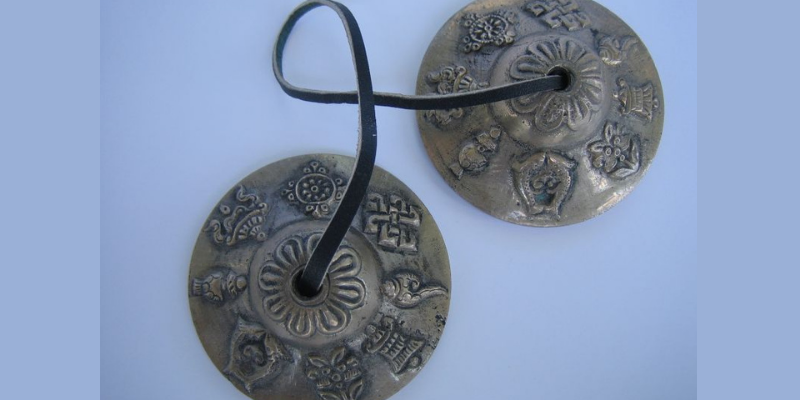Despite all of the well-documented benefits of meditation, some people may find it difficult to begin a new programme, particularly if they are doing so at home, away from studios and teachers. According to individuals who practise modern sound therapy, taking up a set of Tibetan instruments may help you achieve a sense of serenity if you’ve been trying to find a sense of quiet.
TIPA has a series of Tibetan Musical Instruments like Drayen, Lute, Dulcimer etc. that been connected to a variety of mental health advantages in studies, which is one of the reasons they’ve grown in popularity in mindfulness instruction around the world. We’ve outlined everything you’ll need to get started with your own singing bowls-based meditation regimen below.
What are Tingshas?
Tingshas are Tibetan Buddhist Cymbals used as ritual aids in prayers and ceremonies. When struck, the two ends of a string generate a clean, high-pitched sound. They have an unusually lengthy tone that emanates from them. The word “tingsha” is derived from two Tibetan syllables: “ting” refers to the sound made by the metal, and “sha” means “hanging.”
Tingshas were historically made by hand, utilising the Tibetan sand-casting method. Artists created two moulds out of fine-grained, moist sand, which were baked repeatedly over charcoal.
Meditation is also done with Cymbals. During meditation and pausing, their sound is claimed to cleanse the spirit by clearing the mind of all thoughts.
How can Tingshas be used?
- Incorporating Tingshas into Yoga Classes
Tingshas can be utilised at the beginning or finish of yoga lessons, as previously noted. The Cymbals can be used to help students settle in to their mats and to their practise at the start of class, as well as to aid in the flow of the breath. Tinging them once for inhalation and once for exhalation.
How to play a Tingsha?
The striking or tapping approach is similar to hitting a match stick against a matchbox. It’s preferable if you make the sound with both hands, one striking the other in a downward or outward motion. Always hit on the inner rims of the Tingsha, never on the outside face of the Ting-Sha where there is embellishment. Part of the circumference should be touched, not the entire circumference. If the two components collide too violently, a clashing sound occurs; it is necessary to make that instant sound with minimal touch on each other. When they touch simultaneously, sound will oscillate; depending on the exercise, leave certain pauses between each stroke for sound waves to soak in the space.
Final Thoughts
Tingshas were originally made by talented Tibetan craftsmen with a keen sense of elegance and precision. Some modern versions, on the other hand, are dreadful rip-offs of the originals. Many “antique” or “ancient” bells are actually brand new, with the appearance of age. If you want to buy old-fashioned bells, make sure you get them from a trusted source like us.
TIPA provides a huge range of Tibetan Musical Instruments for you to experience tranquillity. They include Dram-nyen (lute), Tibetan lute and Cymbals. Contact us today to book one for yourself!



